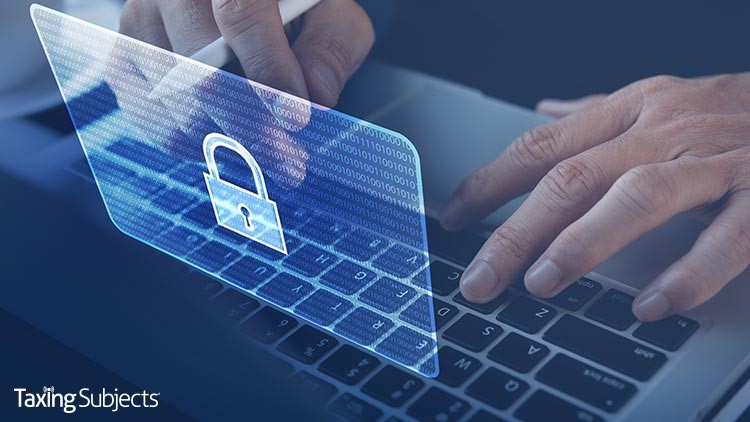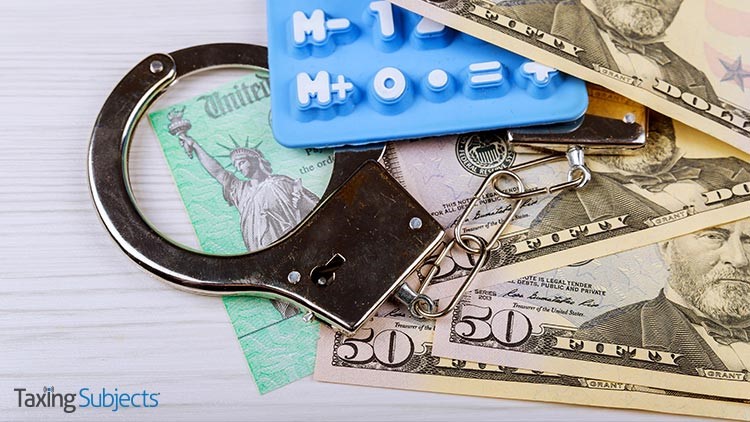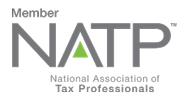by | Jul 25, 2020 | Tax Tips and News
Many taxpayers may have collectively breathed a sigh of relief on July 16, but anyone selling big-ticket items between now and the end of 2020 will still need to report large cash transactions. The Internal Revenue Service says these reports can be batch e-filed, which should make life a little easier for the car dealerships and real estate agents who are likely to be affected by the requirement.
“Although businesses have the option of filing Form 8300, Report of Cash Payments Over $10,000, on paper, many have already found the free and secure e-filing system is a more convenient and cost-effective way to meet the reporting deadline,” the IRS says. “The form is due 15 days after a transaction, and there’s no charge for the e-file option.”
The IRS notes that those who previously relied on paper forms will first need to create an account with the FinCEN BSA E-Filing System before being able to e-file Form 8300, highlighting available support lines in the announcement:
- Phone: 866-346-9478 (Monday-Friday, 8:00 a.m. – 6:00 p.m. EST)
- Email: bsaefilinghelp@fincen.gov
In addition to the added convenience, the IRS explains that reporting these cash transactions helps combat financial crimes, like tax evasion and money laundering.
How does the IRS define cash transactions for the purposes of Form 8300?
In FS-2020-11, the IRS defines cash as “coins and currency of the United States or any foreign country” and “cash equivalents that include cashier’s checks (sometimes called a treasurer’s check or bank check), bank drafts, traveler’s checks, or money orders.”
When a payment is made with multiple forms of cash, transaction will still need to be reported if the sum reaches the $10,000 threshold, is made within a 24-hour period, and is “part of a single transaction or two or more related transactions within a 12-month period.”
Here are some of the transactions specifically listed:
- Automobiles
- Jewelry
- Mobile homes
- Furniture
- Collectibles
The IRS says you should file a Form 8300 if you “[know] the person is trying to avoid the reporting requirement.”
Source: IR-2020-168; FS-2020-11
– Story provided by TaxingSubjects.com
by | Jul 23, 2020 | Tax Tips and News
The IRS this week published the first installment of the Security Summit’s annual data security outreach campaign: “Working Virtually: Protect Tax Data at Home and at Work.” Taking place over five weeks, this year’s event—as the title suggests—focuses on how to keeping data safe when working from home. Focusing on remote work is particularly timely given the resumption of more stringent social-distancing policies across the country.
Remember, identity thieves have been trying to crowbar their way into tax professionals’ client databases for years. After all, paid tax return preparers handle sensitive financial information—the larger the office, the riper the target. (If that wasn’t bad enough, criminals use stolen preparer credentials to fraudulently file tax returns.)
What is the Security Summit?
In 2015, the IRS, state departments of revenue, and private members of the tax industry established the Security Summit. Their goal was to develop best practices for teaching tax professionals and taxpayers to avoid identity theft tax refund fraud.
Security Summit outreach campaigns have since helped substantially cut the number of tax-related identity theft scams. The IRS notes in the press release announcing this year’s topics that there has been a 80% drop in reported incidents in the intervening years—even more impressive considering there are more adults with access to the Internet than when the Summit’s work began.
What are the “Security Six” recommendations?
The first week of the “Working Virtually: Protect Tax Data at Home and at Work” campaign is dedicated to spreading awareness of the “Security Six,” a list of six proactive steps anyone can take to protect their data. You will probably recognize a few of the recommendations.
Antivirus software tops the list, and it’s probably the one that is familiar to most people. These programs certainly offer out-of-the-box protection against older malware, but the criminals writing computer viruses aren’t content to rest on their laurels. The IRS says that you need to need to regularly download updates for your antivirus and perform both automatic and manual scans to gain the full benefit of these programs.
Firewalls filter Internet traffic for your computer or network, and they come in two flavors: hardware and software. Hardware firewalls “are particularly useful for protecting multiple computers and control the network activity that attempts to pass them,” and software firewalls perform that function for individual devices. Generally, operating systems include a firewall, but third-party programs are available.
Multi-factor authentication requires users to enter more than one security code to access the protected device. “Often [multi-factor] authentication means the returning user must enter credentials (username and password) plus another step, such as entering a security code sent via text to a mobile phone,” the IRS explains. “The idea is a thief may be able to steal the username and password but it’s highly unlikely they also would have a user’s mobile phone to receive a security code and complete the process.”
Backup software and services store a copy of your computer files in a separate location. This protection lets you restore all of the files that would otherwise be lost on a damaged or malware-compromised hard drive. Considering the rise in ransomware—criminal-created programs that lock access to infected computers—having a regularly updated backup is a very good idea. The IRS also recommends that you encrypt any taxpayer data that you back up.
Drive encryption makes life difficult for criminals by “[transforming] data on the computer into unreadable files for an unauthorized person accessing the computer to obtain data.” Anyone who has seen a documentary about encoded wartime messages is familiar with the basic concept. As with firewalls, the IRS says there are hardware- and software-based solutions.
Virtual Private Networks are the final “Security Six” recommendation, and the IRS says they’re the most important tool for anyone working from home. “A VPN provides a secure, encrypted tunnel to transmit data between a remote user via the Internet and the company network,” the IRS explains. “Search for “Best VPNs” to find a legitimate vendor; major technology sites often provide lists of top services.”
Source: IR-2020-167
– Story provided by TaxingSubjects.com
by | Jul 22, 2020 | Tax Tips and News
Many states are rolling back reopening plans, and the looming flu season could present additional complications. That’s why the Internal Revenue Service and Security Summit partners are developing a five-week data security campaign that focuses on remote work.
“To help tax practitioners, the IRS, state tax agencies, and the nation’s tax industry, next week will begin a five-part summer awareness initiative called Working Virtually: Protecting Tax Data at Home and at Work,” the IRS explains in the press release from last Friday. “The initiative highlights security actions key to protecting tax professionals as they respond to COVID-19 while working remotely from their office and clients. Taxpayers can also benefit from some of the security tips.”
What are the Working Virtually: Protecting Tax Data at Home topics?
Tax professionals who closely follow the Security Summit will recognize the five Working Virtually: Protecting Tax Data at Home topics that are scheduled to drop on July 21, July 28, August 4, August 11, and August 18:
- “The ‘Security Six’ − basic protections that all practitioners should take”
- “Multi-Factor Authentication to protect accounts”
- “Virtual Private Networks to protect remote sites”
- “Phishing scams, including COVID-19 and Economic Impact Payments”
- “Protect Yourself: The need for a security plan and data theft plan”
It might seem quaint that people would need to be reminded to install security software, but the IRS notes that the Security Summit’s campaigns have significantly helped taxpayers: “Between 2015 and 2019, the number of taxpayers reporting they were identity theft victims to the IRS fell 80%, and the number of confirmed identity theft returns stopped by the IRS declined by 68%. In 2019, there were 443,000 confirmed identity theft tax returns compared to 1.4 million in 2015.”
(Besides, I’m sure everyone knows at least one person who rarely updates their virus definitions—if they even have an antivirus program installed at all.)
Aside from learning about the benefits of additional security measures like multi-factor authentication and VPNs, the final week in the series promises to explain tax office security plans. For those who aren’t familiar, paid tax return preparers are covered by the Federal Trade Commission’s Safeguards Rule. It requires that you have a written security plan in place that outlines your office’s procedures for protecting client data and addressing security breaches if they occur.
The Virtual Nationwide Tax Forums will also highlight data security.
The IRS says the first Virtual Nationwide Tax Forums will be available from July 21 to August 20, and “tax professional security will be a special focus.” Registration costs $289 per person—don’t forget to visit the Drake Software virtual booth during the event!
Source: IR-2020-163
– Story provided by TaxingSubjects.com
by | Jul 21, 2020 | Tax Tips and News
The Internal Revenue Service says seniors and retirees aren’t required to take money out of their IRAs and workplace retirement plans this year.
The Coronavirus Aid, Relief, and Economic Security Act—also known as the CARES Act—waives the required minimum distributions during 2020. The provision covers IRAs and retirement plans and includes beneficiaries with inherited accounts.
The waiver includes Required Minimum Distributions (RMDs) for those individuals who turned 70 ½ in 2019 and took their first RMD in 2020. Roth IRAs do not require withdrawals until after the death of the owner.
Already Taken a Required Minimum Distribution?
If a taxpayer has already taken an RMD in 2020—including someone who turned 70 ½ during 2019—they will have the option of returning the distribution to their account or some other qualified plan.
RMDs already taken in 2020 are considered eligible for rollover, so RMDs can be rolled over to another IRA, another qualified retirement plan, or simply returned to the original plan.
An IRA owner or beneficiary who has already received an RMD in 2020 can repay the distribution to the distributing IRA no later than Aug. 31, 2020, to avoid paying taxes on the distribution.
IRS Notice 2020-51 (PDF) also provides that the one rollover per 12-month period limitation and the restriction on rollovers to inherited IRAs do not apply to this repayment.
The IRS says CARES Act provisions apply to most retirement plans, including traditional IRAs, SEP IRAs, SIMPLE IRAs, 401(k) plans, 403(b) plans, profit sharing plans and other defined contribution plans.
The RMD suspension does not apply to qualified defined benefit plans.
For more information on the suspension of RMDs, the CARES Act and retirement plans, check out the IRS’ website for Coronavirus-related relief for retirement plans and IRAs.
– Story provided by TaxingSubjects.com
by | Jul 19, 2020 | Tax Tips and News
A new report gives the Internal Revenue Service high marks for the steps taken in the fight against refund fraud and identity theft tax refund fraud. But despite the large gains made against criminal efforts, the report adds that there’s no time to rest on one’s laurels.
The report comes from the office of J. Russel George, the Treasury Inspector General for Tax Administration (TIGTA). There were two basic reasons for the audit, TIGTA writes. One is that identifying and stopping individual tax refund fraud, including fraud stemming from identity theft, continues to be a challenge to IRS management.
In addition, the Taxpayer First Act, passed in 2019, allowed for more information-sharing between the IRS and industry partners to better identify more cases of identity theft and tax refund fraud. The Inspector General wanted to see if the IRS was making headway in those areas.
Is the IRS on the right track?
TIGTA’s report is largely complementary of the IRS’ efforts against refund fraud, saying the agency continues to evaluate and expand on its successful fraud detection actions, while also testing new fraud-detection initiatives.
“The actions taken on the part of the IRS have been extremely effective in addressing the identity theft epidemic and reducing its negative impact on tax administration,” the report states. “For example, the IRS actively works with the Security Summit partners to continue to improve its identification of fraudulent tax returns.”
This partnership means the IRS is able to use nearly all the available data elements in tax returns as part of its automated fraud detection filters, protecting some $18.6 million in tax refund as of December 2019.
Some provisions of the Taxpayer First Act, however, have been less successful. For example, the Taxpayer First Act requires that the IRS develop performance metrics to measure the success of the Information Sharing and Analysis Center (ISAC) in detecting and preventing identity theft tax refund fraud. Currently, the only measure the IRS has relative to the ISAC is the level of participation.
The provision has been implemented, the IRS says, but the data tools to measure the success of the ISAC in detecting and preventing identity theft tax fraud haven’t been developed.
TIGTA says there’s room for improvement.
In a 2018 identity theft report, the IRS said it was able to stop around $6 billion in fraudulent tax refunds from being issued. Despite this, identity thieves were still able to get their hands on an estimated $90 million to $380 million in fraudulent tax refunds (termed unprotected revenue).
The IRS set a goal of reducing the amount of unprotected identity theft tax refund paid by 2% by Dec. 31, 2019, and a further 1% thereafter until Dec. 31, 2024.
The Inspector General recommended that the IRS Commissioner of the Wage and Investment Division develop measures to report on the success of the ISAC in identifying and detecting fraudulent tax returns.
IRS management agreed with the recommendation, adding that the agency plans to take corrective actions. However, the management reply conceded that management can only commit to measuring IRS outcomes, since the reporting of state and industry outcomes is beyond IRS control.
– Story provided by TaxingSubjects.com










